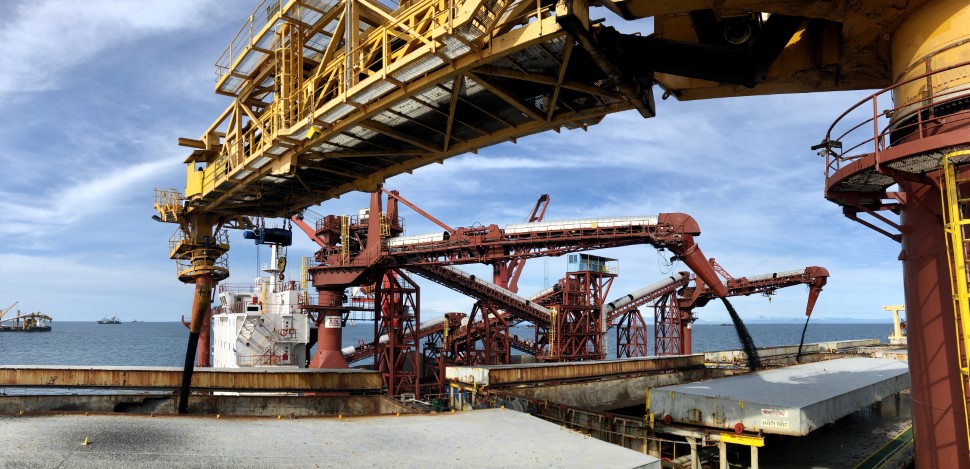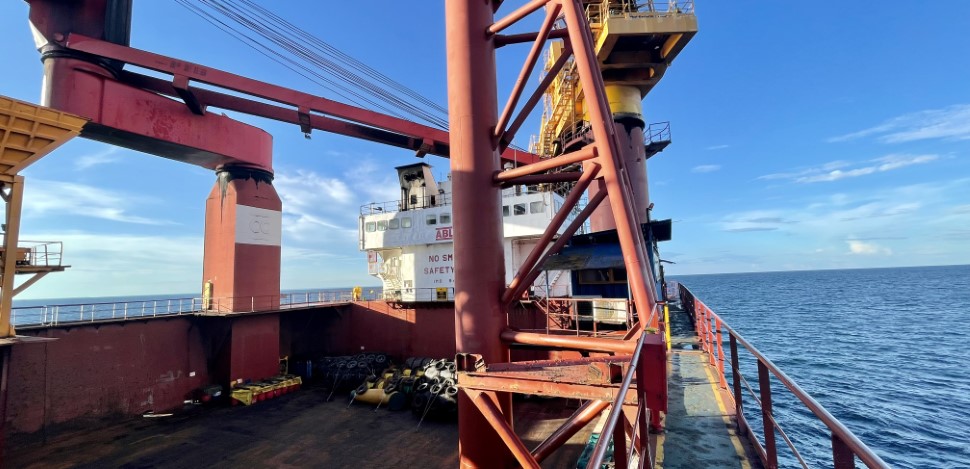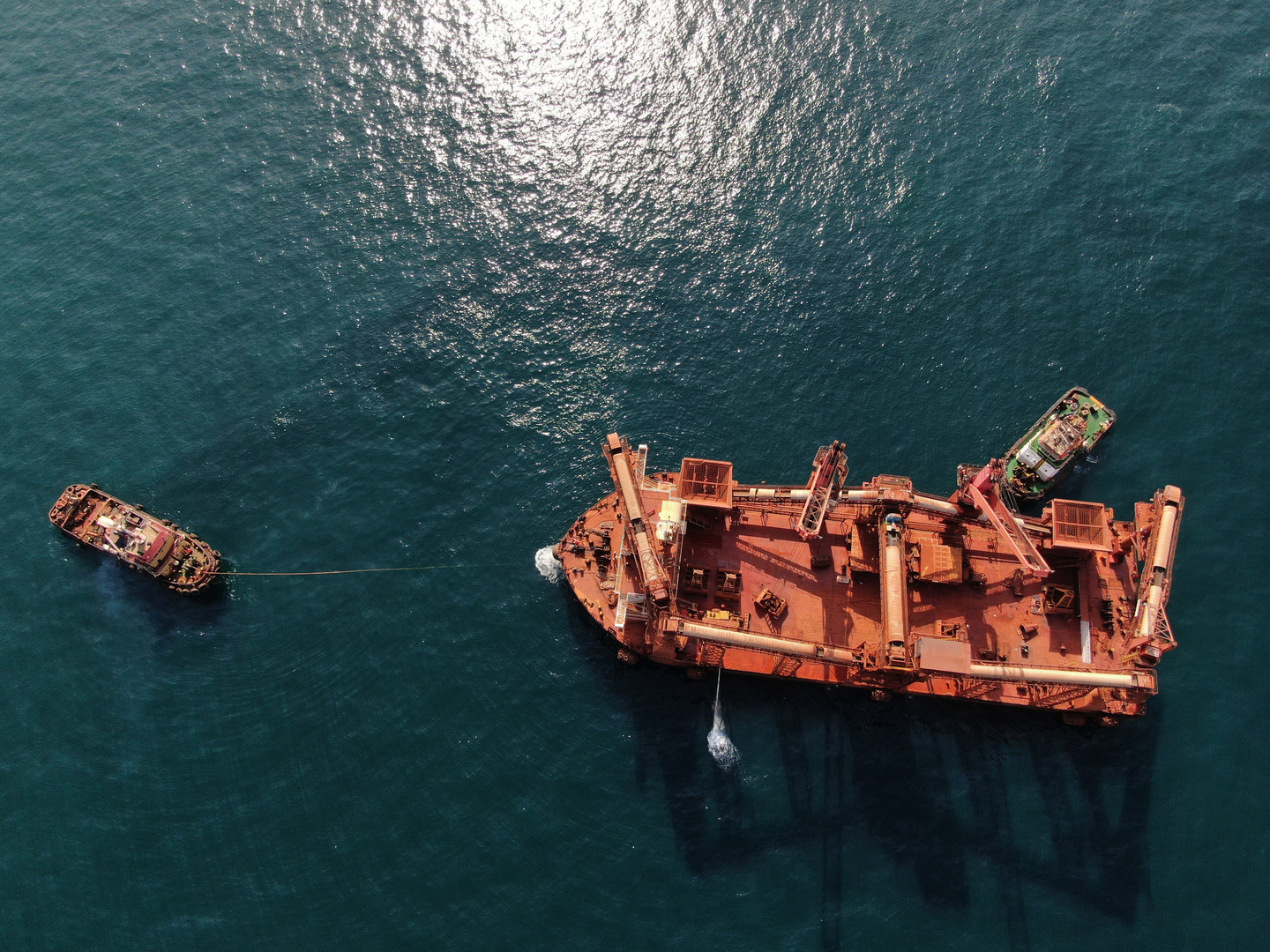Bulk conveyors, their components and related technologies
The advent of the pandemic dramatically disrupted world markets with the slowdown of commodity trades and the freezing of many offshore logistics projects, writes Luca Condini, Technical Director of Shi.E.L.D. Services.
With the post-Covid slow recovery and the increase of trades the same projects that had been halted are now active again especially in those countries rich in commodities that have seen their value increase.
A very obvious example is West Africa, which had seen important development already in pre-Covid times especially in Guinea and is now further developing in other countries such as Gabon, Sierra Leone, and Congo with materials such as bauxite, manganese, iron ore, and nickel.
The resumption of offshore logistics projects has led to an increased demand for transshipment facilities. But new constructions now take longer than before the pandemic mainly because of the limited availability of electronic components found in all major machinery.
The providers of transshipment services are therefore trying to find available assets on the market that can fit as-is or with little modification or that can be converted to handle different materials from which they were designed.

CONVERT A TRANSSHIPMENT FACILITY TO HANDLE DIFFERENT CARGOES
We are a leading provider of logistics management and consulting services, powered by a team of professionals with decades of experience in the logistics and bulk shipping industry. At Shi.E.L.D. Services, we understand that every business is unique. That is why we work closely with you to develop tailored solutions that address your company’s specific shipping challenges and needs. We are a leading provider of logistics management and consulting services, powered by a team of professionals with decades of experience in the logistics and bulk shipping industry. At Shi.E.L.D. Services, we understand that every business is unique. That is why we work closely with you to develop tailored solutions that address your company’s specific shipping challenges and needs.
The characteristics of the material to be handled have a very large impact on the operation of belt conveyor systems. It is not only the specific gravity, but also and especially the degree of moisture, sliding capacity, and tendency to stick or pack that can cause the conveyor system to be unable to transport the material. What should be done, then?
First, a feasibility study must be conducted in co-operation with the manufacturer of the belt conveyor system, analysing the characteristics of the material to be handled, identifying the potential critical points and bottlenecks of the conveyors and drafting the possible modifications. During this phase, the inputs of those who operate the equipment and have practical experience with the types of material to be handled are of paramount importance.
-replacement of the rubber belts with other types more resistant to abrasion; and
-replacement of the lining of hoppers and transfer points. In detail, the lining is chosen with more resistance to abrasion at points where the material impacts with a greater force or with better sliding characteristics at points where the material must flow to avoid
clogging.

Based on the operational requirements, some significant interventions may involve:
- the modification of the geometry of the transfer points so that the material flow is as smooth as possible and that there are no constrictions that could cause clogging;
- the replacement of the drive units with more powerful ones;
- the installation of inverters to adjust the belt speed (to be able to regulate the belt speed is of great help especially handling materials that tend to clog); and
- the modification of the hopper outlet with steel profiles inserted at strategic points to lower the load on the belt conveyor installed underneath or to promote the cargo flow.
The interventions mentioned above can be carried out without the need to bring the vessel to the shipyard.
Furthermore, if the project economics necessitates, then more enduring modifications might include:
- replacement of the conveyor drive end with larger drums needed for even more powerful drive units; and
- modification of the system layout by moving the existing conveyors to a more suitable position or adding new conveyors (e.g., belt feeders to extract material from hoppers).
These interventions require bringing the vessel to the shipyard with increased modification costs.
A balance has to be reached between high flow rates and consistency, upon implementation of modifications. Trying to achieve a high flow rate at the expense of consistency can lead to clogging and overflow that requires the system to be stopped for cleaning.
Therefore, it is not important to achieve the highest peak rates but to guarantee that a reasonable rate can be maintained for an extended period. This drastically reduces downtimes and stoppages for cleaning and has a positive impact on project economics.
The truth is that there is no universal recipe that is applicable to all situations, and sometimes even theory clashes with the actual experience in the field. Therefore, it is important for the shipowners who want to modify their assets to rely on the expertise of companies like Shi.E.L.D. Services, who have the know-how and the extensive experience in the field and can provide the best recommendation for the choices and modifications to be carried out.
As an example, upon request of a client, a leading player in offshore logistics, Shi.E.L.D. Services redesigned and modified one of the client’s transshipper assets —, specifically designed for coal handling — and adapted the unit to handle iron ore. The entire project was completed in record time and within a limited budget. This assisted the client to venture into new geographical areas and secure contracts in West Africa.

